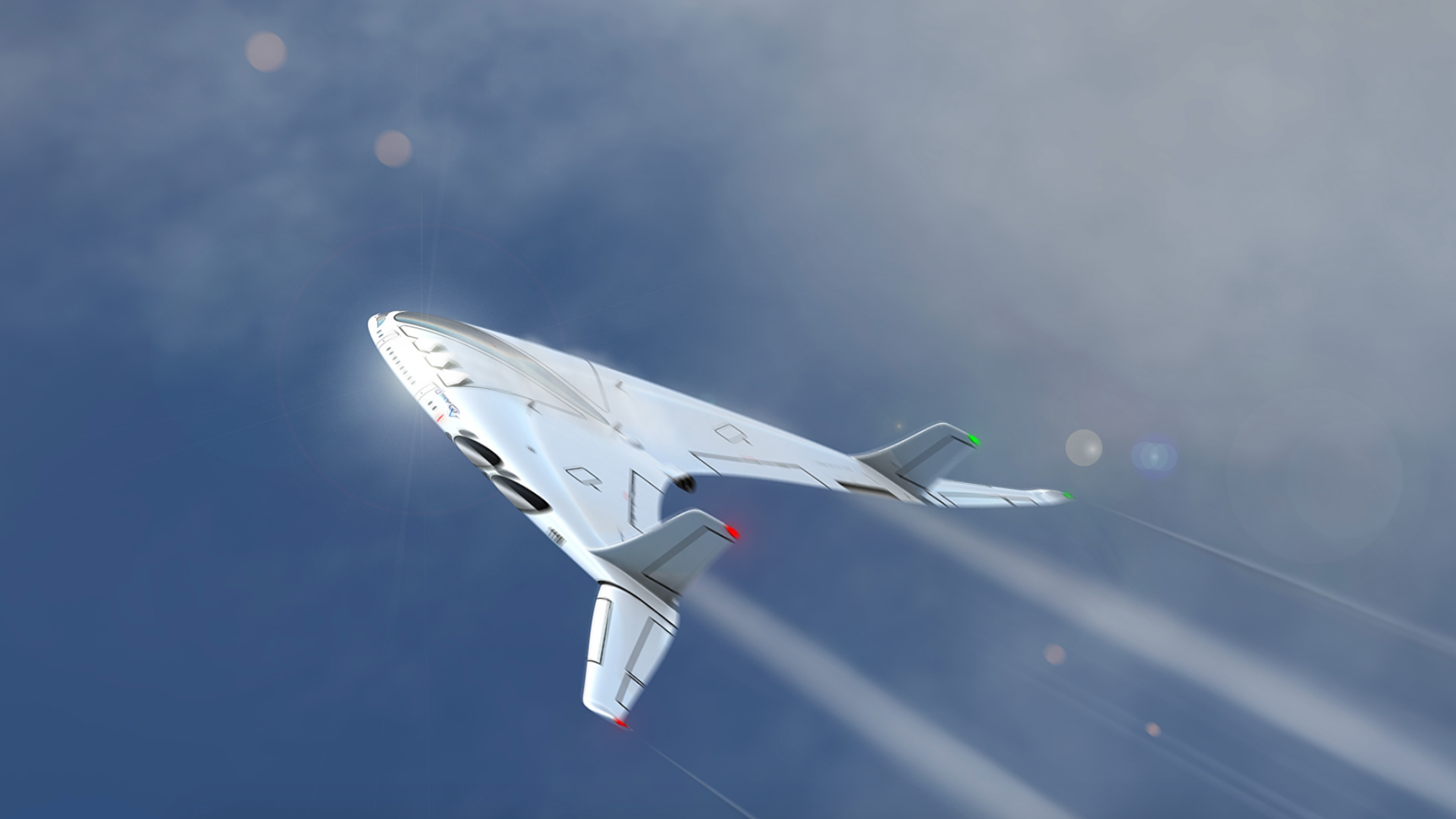
Summary
- A Barcelona-based designer’s ideas could shape the future of aviation with his new supersonic plane called Sky OV.
- The Sky OV concept utilizes advanced engine technology to achieve unbelievable speeds and improved fuel efficiency.
- Sustainability is a key focus. The Sky OV powered by hydrogen fuel and electric power.
Are the futuristic aviation concepts we see in our favorite science fiction films about to become a reality? We might not be flying around in X-wings anytime soon, but Oscar Viñals, an industrial and concept designer based in Barcelona, Spain, is dreaming up new ways passengers can take to the skies. With his visual masterpieces, his work isn’t purely artistic — Viñals creates aircraft designs that could shape the future of aviation as we know it, through hydrogen fuel, electric power, and more.
A design where air and space meet
Viñals’ latest work has grabbed the attention of design, engineering, aviation fans, and more. Dubbed “Sky OV,” he has envisioned a new supersonic plane design that just might become a reality in the not-so-distant future, revolutionizing air travel as we know it. In a post on Instagram, Viñals elaborates:
“The next generation of commercial airplanes could be radically ‘disruptive’ than current airplanes… fuselages, engines, power sources and other aviation systems, that today look like Sci-fi would be real.”
From a bird’s eye view, the Sky OV slightly resembles another sci-fi fan favorite symbol: the delta insignia Star Trek fans know and love. The sleek, curved arrowhead body is flanked by a blended-wing system engineered to fold up when not in use.
Viñals’s designs include what looks like a super shiny exterior and a unique, aerodynamic shape similar to a futuristic fighter jet. According to his Behance portfolio, however, the Sky OV is designed to be a passenger jet, and a behemoth at that.
Up to 300 passengers could be accommodated in his aircraft design. Though there are no images or renderings of the plane’s interior, Viñals assures that those lucky enough to travel on board would be treated to “very comfortable conditions, with a multi-configuration space and all kind of commodities and luxury devices.”
Powered by bladeless turbines
Some of the most impressive aspects of the Sky OV concept include the engineering details the designer thoughtfully incorporated. According to Viñals, the aircraft is inspired by potential advancements in aviation technology, including innovative new engine designs.
To develop a lighter, quieter, and more energy-efficient engine, Viñals, includes details about the Hybrid PDE (Pulse Detonation Engine) and turbofan technology:
“A pulse detonation engine is a propulsion device that uses controlled explosions to create thrust. These types of engines have been researched for use in supersonic aircraft. Theoretically, pulse detonation engines are more efficient than traditional jet engines at high velocities, and can drive an aircraft to four or five times the speed of sound.
Some researchers believe that pulse detonation engines can be combined with other types of engines. This type of hybrid system might allow an aircraft to use a fuel-efficient jet engine during takeoff, and then switch to the more powerful detonation engine for high-speed cruising.”
The Sky OV could utilize this next-generation engine technology to reach unbelievable speeds. The website lists a cruise speed of 913 mph (Mach 1.2), with a max speed of 1,141 mph (Mach 1.5), reaching nearly Concorde-speed levels. And by eliminating fan blades, these engines would operate through magnetic levitation.
Sustainability in the sky
Viñals understands that the future of air travel includes sustainability, which is why the Sky OV incorporates several eco-friendly and green technology elements.
His website states that the conceptual plane would be “powered by hydrogen fuel and electric power” and that it would be capable of traveling long distances with “very low hydrogen fuel consumption” and “zero emissions.” While liquid hydrogen does have some drawbacks, it is considered one of the most environmentally friendly aircraft fuels currently under development.
The use of what Viñals refers to as a “Hybrid Dyson Fluidic Propulsion Air Multiplier (FPAM) bladeless engine” would also contribute to a less destructive environmental impact:
“The system could deliver more thrust and use 50% less fuel than a small turbojet. Compared to turbofans or turboprops, it’s about 30% lighter and much less mechanically complex – clear advantages in aviation.”
The designer emphasizes that Dyson has been using this technology for years and that there are clear advantages when it comes to accelerating a consistent stream of air without exposed blades:
“The system could turn the air surrounding a craft into powerful thrust capable of supersonic speed. Helmholtz cavities make noise, of course. Figure out exactly how these cavities work, and then you can control that noise. Furthermore, by adding Helmholtz cavities of sorts into the base of the FPAM, engineers increased air pressure. And ultimately these cavities began
to work as silencers.”
Flying into the future
Viñals is keen to see where the future of aviation takes off to. He’s developed other concepts for futuristic flight, including the Hyper Sting, a supersonic jet he claims could fly from New York City to London in just 80 minutes.
While the Sky OV only exists as a concept, these eye-catching renderings show what supersonic air travel could become in the next generation. By incorporating bladeless turbine engines, hydrogen propulsion, and a focus on luxury, his visionary design represents an ambitious reach into the future.
Source: Oscar Viñals

